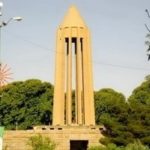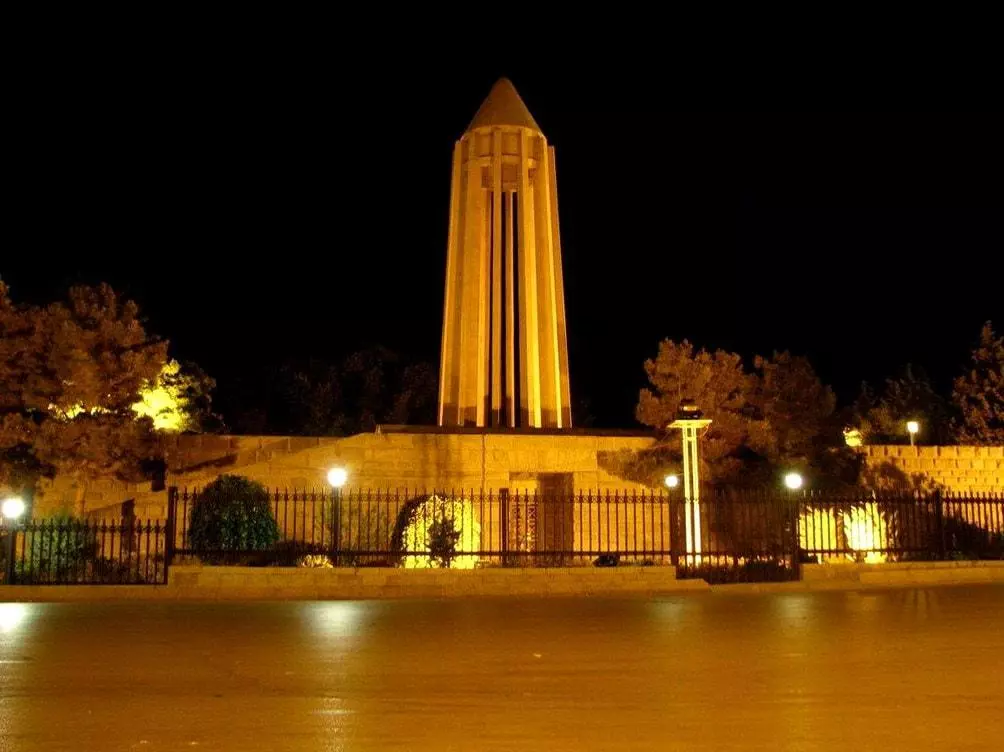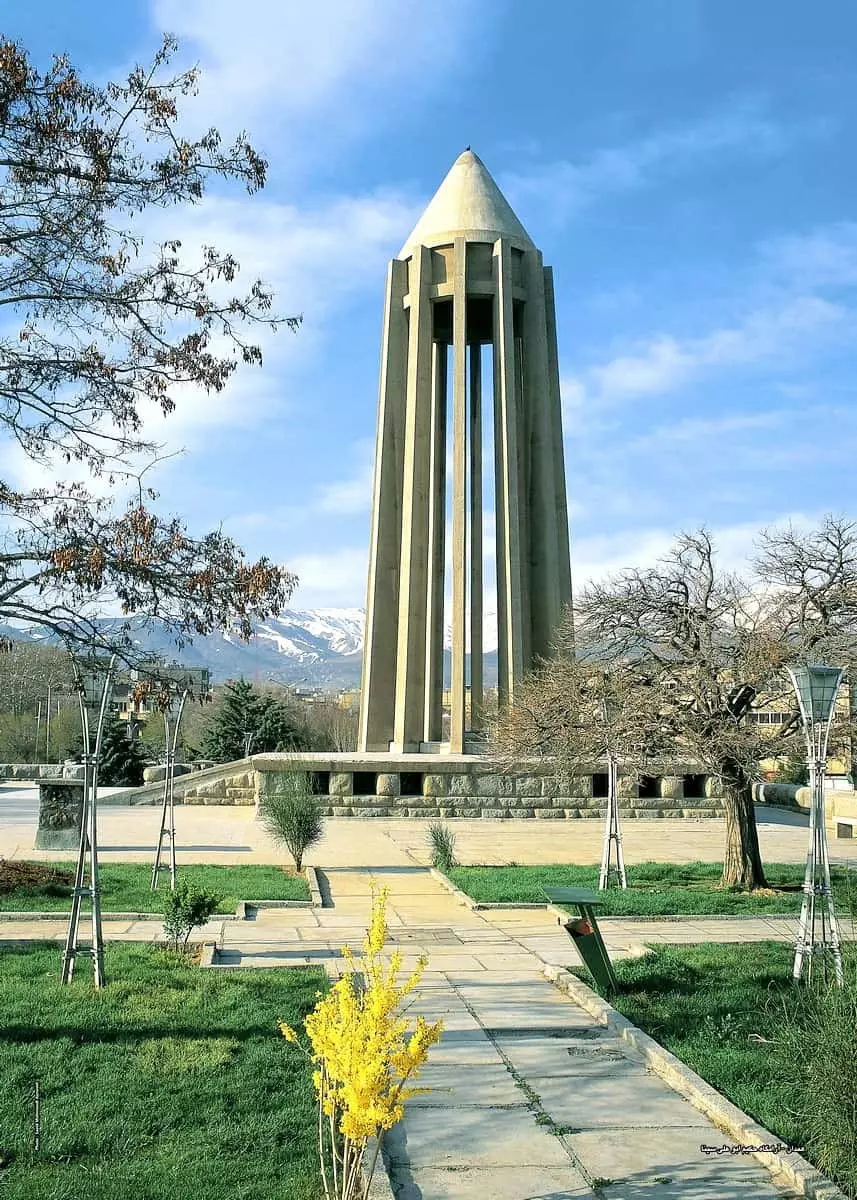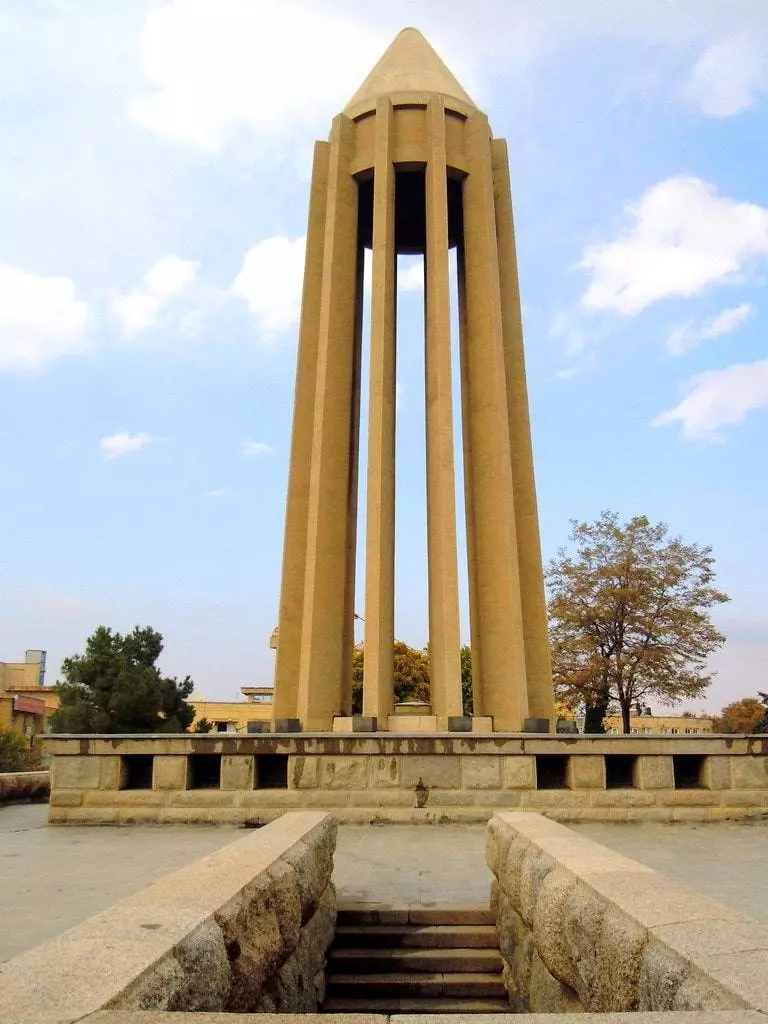Mausoleum of Ibn Sinā (Avicenna)
The mausoleum of Ibn Sinā, famous Iranian doctor and philosopher (980-1037), is located in the homonymous square in the center of the city of Hamedān. The original building of this mausoleum was built at the behest of Negar, grandson of Fathali Shāh Qājār.
The association of Iran's national works, on the occasion of the thousand years since the birth of Ibn Sinā, decided to build a new mausoleum. The project and the design of this were executed in the year 1323 (Solar Egira) by the engineer Houshang Seyhoun.
The architecture of this mausoleum is a combination of the pre and post Islamic Iranian one and in designing it we were inspired by the Gonbad-e Qābus tower in the city of Gonbad-e Kāvus, the Persian garden, the traditional khowz-khānehs and historical buildings Iran.
The construction of this mausoleum with a surface area of 1792 square meters, in a plot with a total area of 3090 square meters, was completed in the year 1333 (solar Egira). The mausoleum has twelve columns, symbol of the twelve sciences in which Ibn Sinā was poured.
The height of each column from the lower ground of the mausoleum up to the dome is almost 23 meters. The width of each from below is 1,17 meters and from above 92 centimeters. The conical dome is almost six meters high.
The height of the main room of the mausoleum is 6,10 meters and the total height of the building (from the ground to the top) is more than 28 meters. In the middle of the twelve columns of the tower, there is a single piece of marble whose length is 2,55 meters, the width is more than one meter and on it there is an epigraph in sols characters.
In the upper part of the inner walls of the square area of the mausoleum, twenty verses in relief sols are written of the famous qasida "eynye," one of the philosophical poems of Ibn Sinā on 40 marble tablets, each of 1,10 meters long and 5 in width.
The mausoleum has two tālār, one located to the north, the other to the south and the latter is used as a museum of coins, ceramics and bronze, while the north is a library with 8 thousand volumes of precious Persian and non-Persian manuscripts and printed and in a special area are preserved the works of Ibn Sinā, the poets and writers of Hamedān. In the courtyard to the east, in front of the entrance is the mausoleum of Abulghāsem Āref Ghazvini (1880-1934) Iranian national poet. A semi-circular garden and a statue of Ibn Sinā are among other remarkable things of this mausoleum. This sculpture, high 3,1 meters and wide 0,9, was built by Abulhassan Sadighi in white marble from Qom and weighs 5.4 tons.






